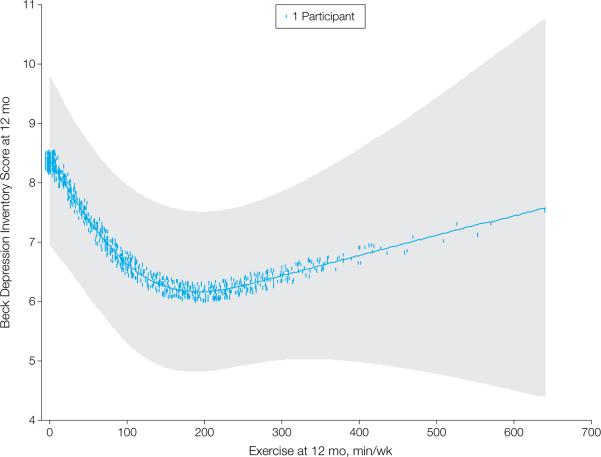Figure 2.
Nonlinear association between self-reported weekly minutes of exercise (from months 9-12) and BDI-II scores at 12 months, adjusted for gender, age, race, smoking status, blood urea nitrogen, LVEF, NYHA class, hypertension, diabetes, six minute walk distance, Weber score, Kansas City Cardiomyopathy Questionnaire score (21), site, beta blockade dose, and mitral valve regurgitation, ventricular conduction status, use of any antidepressant medication, baseline BDI-II scores, and BDI-II scores at 3 months. The weekly minutes term in the model was fitted using a 3-knot restricted cubic spline. The analysis is limited to participants in the AE condition only and with complete BDI-II data at 12 months (N = 629). Fitted line is for a typical participant (median of continuous covariates, most prevalent class for categorical variables). Shaded area represents 95% CI and hatch marks represent case density, with each dot representing a case. Some density dots extend beyond x-axis range in order to display the cases more clearly. Comparing a participant who reported 90 minutes of exercise per week to a participant who reported 0 minutes per week revealed a regression coefficient of −1.67 (95% CI = −2.62, −0.73).

